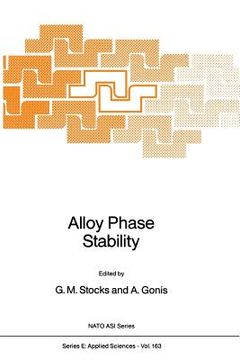Share
Alloy Phase Stability (in English)
Stocks, G. M. ; Gonis, A. (Author)
·
Springer
· Paperback
Alloy Phase Stability (in English) - Stocks, G. M. ; Gonis, A.
$ 52.09
$ 54.99
You save: $ 2.90
Choose the list to add your product or create one New List
✓ Product added successfully to the Wishlist.
Go to My WishlistsIt will be shipped from our warehouse between
Monday, July 15 and
Tuesday, July 16.
You will receive it anywhere in United States between 1 and 3 business days after shipment.
Synopsis "Alloy Phase Stability (in English)"
One of the ultimate goals of materials research is to develop a fun- damental and predictive understanding of the physical and metallurgical properties of metals and alloys. Such an understanding can then be used in the design of materials having novel properties or combinations of proper- ties designed to meet specific engineering applications. The development of new and useful alloy systems and the elucidation of their properties are the domain of metallurgy. Traditionally, the search for new alloy systems has been conducted largely on a trial and error basis, guided by the skill and intuition of the metallurgist, large volumes of experimental data, the principles of 19th century thermodynamics and ad hoc semi-phenomenological models. Recently, the situation has begun to change. For the first time, it is possible to understand the underlying mechanisms that control the formation of alloys and determine their properties. Today theory can begin to offer guidance in predicting the properties of alloys and in developing new alloy systems. Historically, attempts directed toward understanding phase stability and phase transitions have proceeded along distinct and seemingly diverse lines. Roughly, we can divide these approaches into the following broad categories. 1. Experimental determination of phase diagrams and related properties, 2. Thermodynamic/statistical mechanical approaches based on semi- phenomenological models, and 3. Ab initio quantum mechanical methods. Metallurgists have traditionally concentrated their efforts in cate- gories 1 and 2, while theoretical physicists have been preoccupied with 2 and 3.
- 0% (0)
- 0% (0)
- 0% (0)
- 0% (0)
- 0% (0)
All books in our catalog are Original.
The book is written in English.
The binding of this edition is Paperback.
✓ Producto agregado correctamente al carro, Ir a Pagar.

